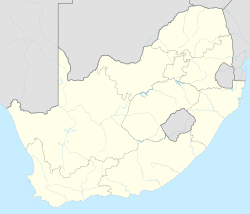Hectorspruit
| Hectorspruit | |
|---|---|

A street in Hectorspruit
|
|
|
|
|
| Coordinates: 25°26′S 31°41′E / 25.433°S 31.683°ECoordinates: 25°26′S 31°41′E / 25.433°S 31.683°E | |
| Country | South Africa |
| Province | Mpumalanga |
| District | Ehlanzeni |
| Municipality | Nkomazi |
| Area | |
| • Total | 10.26 km2 (3.96 sq mi) |
| Population (2011) | |
| • Total | 3,096 |
| • Density | 300/km2 (780/sq mi) |
| Racial makeup (2011) | |
| • Black African | 77.9% |
| • Coloured | 0.8% |
| • Indian/Asian | 0.4% |
| • White | 20.8% |
| • Other | 0.1% |
| First languages (2011) | |
| • Swazi | 55.0% |
| • Afrikaans | 18.6% |
| • Tsonga | 17.0% |
| • English | 4.1% |
| • Other | 5.3% |
| PO box | 1330 |
| Area code | 013 |
Hectorspruit (also Emjejane) is a small farming town situated between Kaapmuiden and Komatipoort on a southern tributary of the Crocodile River in Mpumalanga, South Africa. The farms in the region produce sugarcane, subtropical fruit and vegetables. The town and stream is named after a dog belonging to S de Kock, chief surveyor of the Pretoria - Delagoa Bay railway line.
Hamlet some 30 km west of Komatipoort and 80 km north-east of Pigg's Peak. Named after a tributary of the Crocodile River, the Hectorspruit, which is said to take its name from a hunting-dog which died there from a tsetse fly bite.
...
Wikipedia



